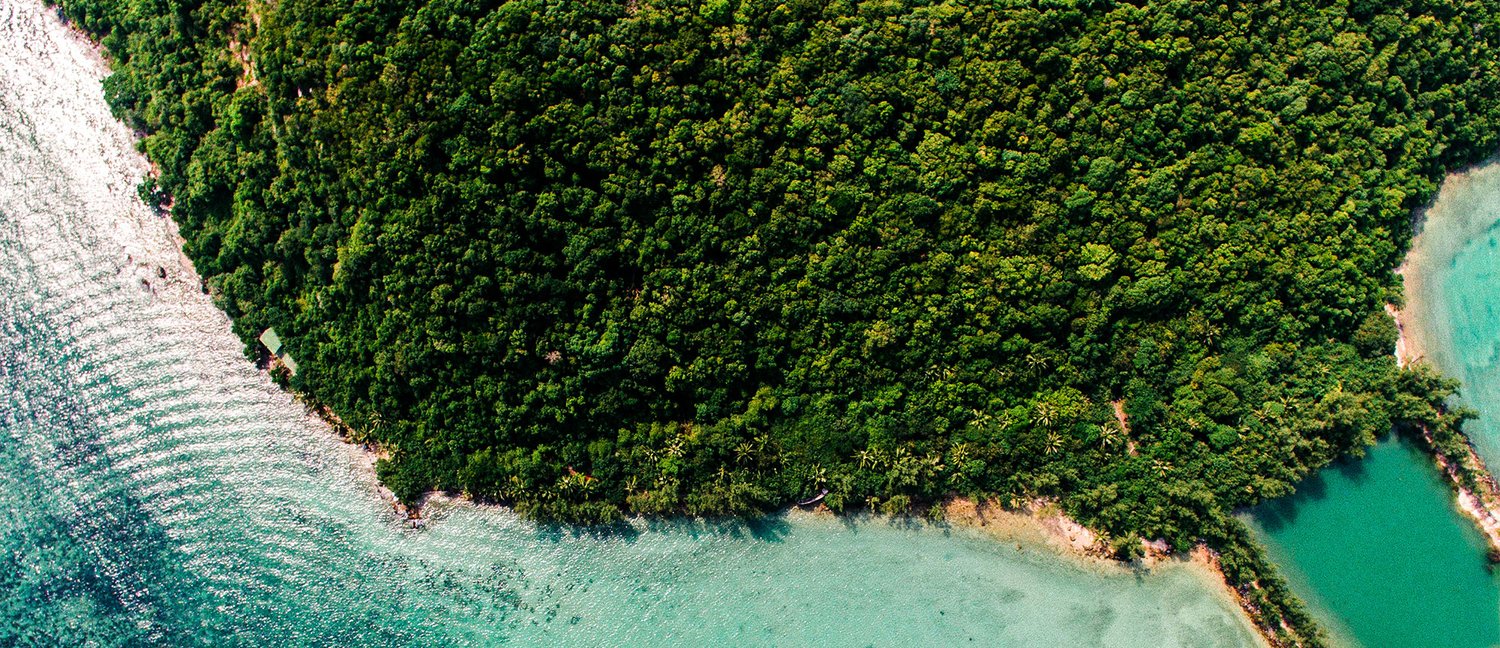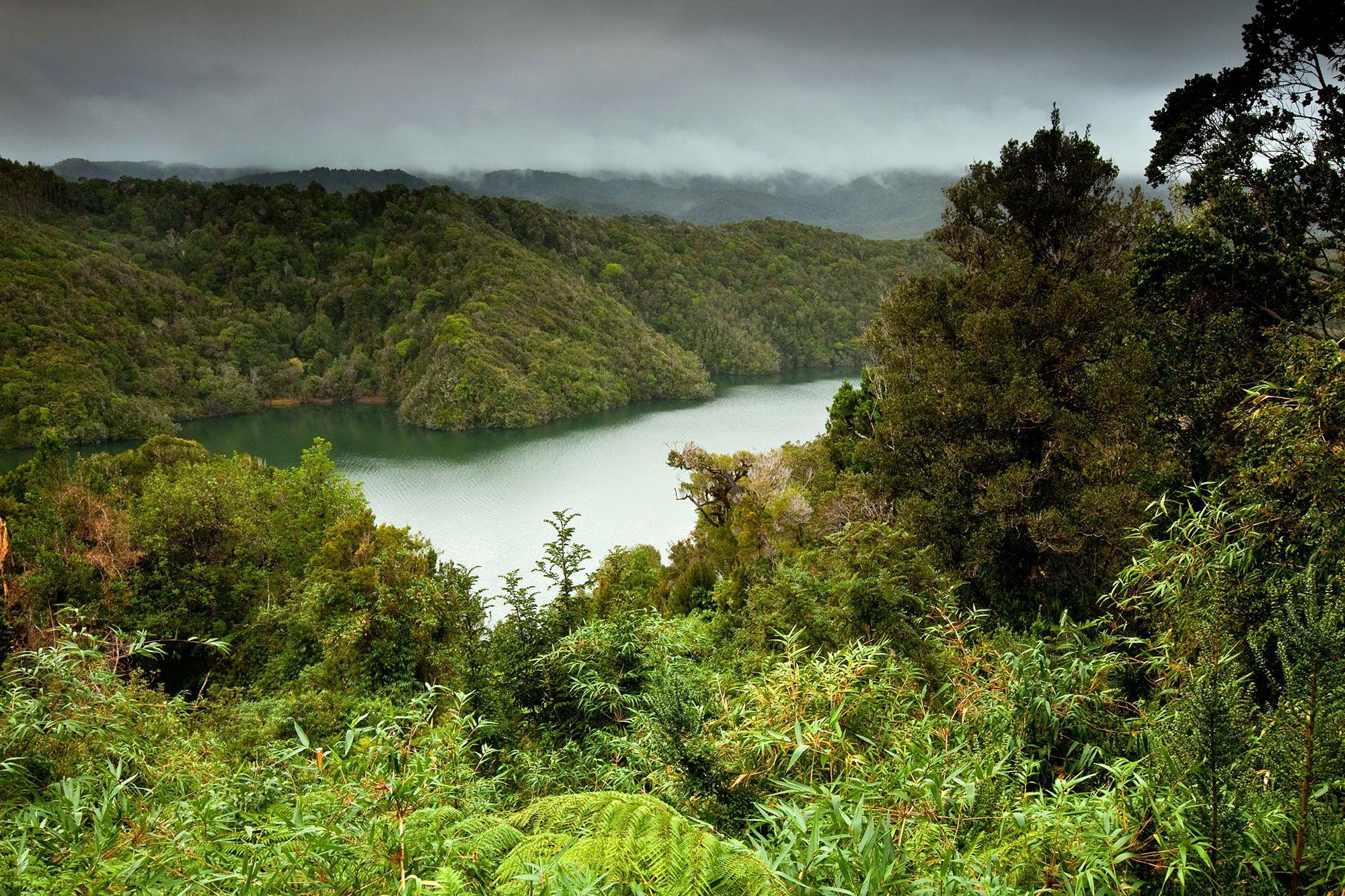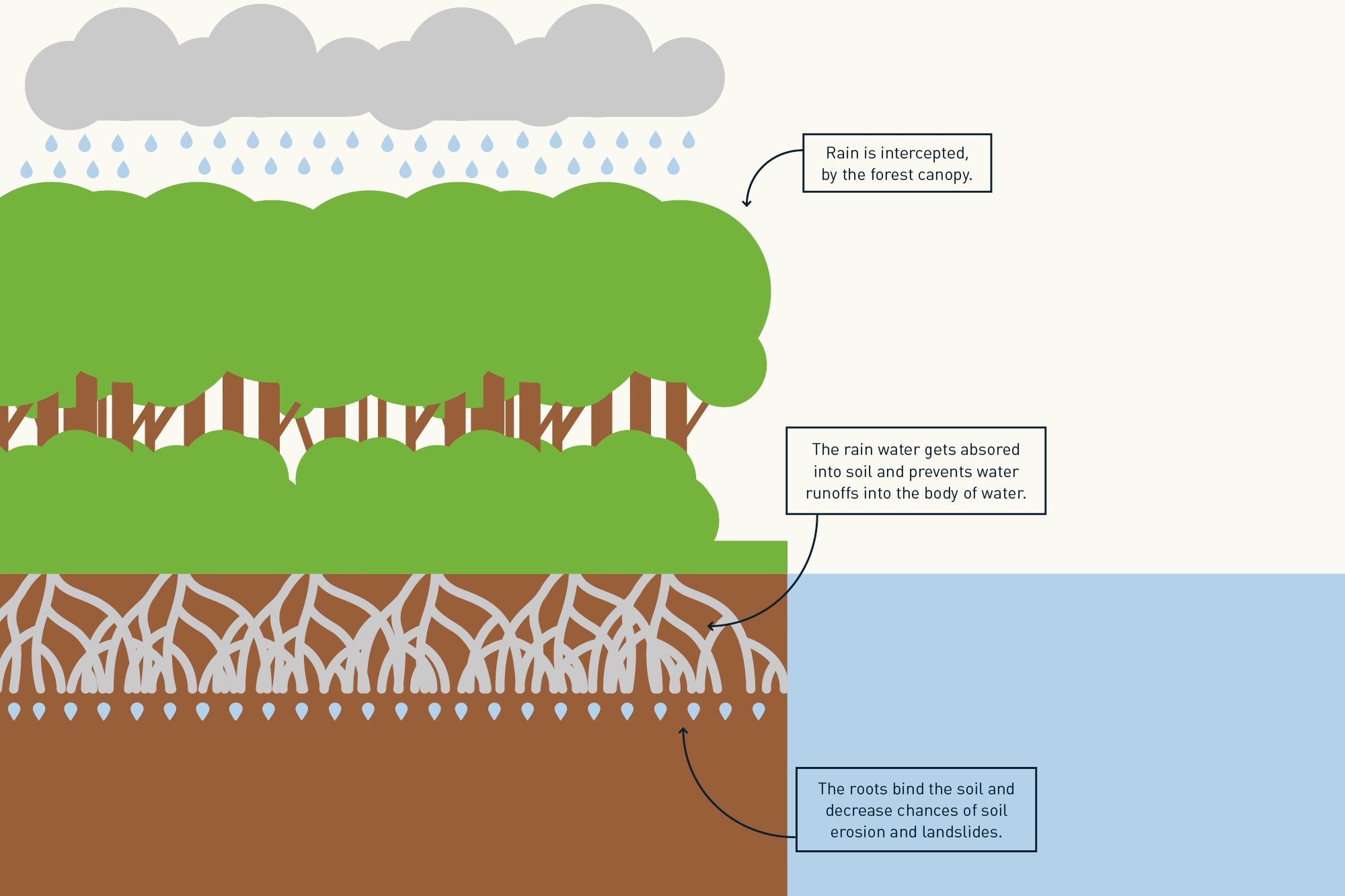
Insight
Why coastal forests are so important
Flooding, particularly autumnal flooding can be directly linked to the deforestation of coastal forests and vegetation.
The removal of living functioning ecosystems for the expansion of agriculture, tourism and industry has many catastrophic knock on effects.

Coastal forests seed and condense constant sea breezes, allowing rains to form and drop inland. Without this natural cycle, the breezes heat up, don’t have enough moisture for rain and eventually return to sit over the seas.
This causes layers of warm air that eventually ( in the autumn) condense and move inland producing huge unbalanced rainfall that leads to flooding. This can happen a significant way inland away from the original coastal areas.

Add to this the fact land is now devoid of vegetation, soils are compacted, over heated and eroded, organic matter is low and hydrological cycles are out of sink and the effects of flooding are devastating.
Return the coastal forests en masse and we could create a environmental butterfly effect over significant areas and reduce flooding.





